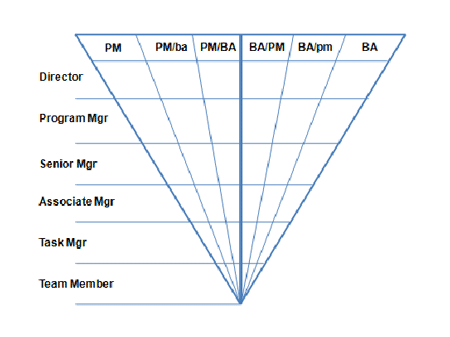Group Dynamics and Requirements Elicitation
As an information technology professional, developing your business acumen is important. One of the skills you need is the ability to facilitate. In your case, it is all about “facilitation for elicitation of requirements” to solve business problems. In working with groups, there are a number of dynamics that the facilitator needs to be aware of. It is helpful if you consider the different group characters and how to deal with them.
The Isolator
This is that one person who remains outside the group or is thinking about previous topics. Consider spending time helping people get acquainted or have discussions using pairing and triads. Provide opportunities for debriefing or summarizing what was discussed. Get the participants involved.
The Monopolizer
We all know this person. They monopolize the time and focus of the group. Be clear on your expectations, use your body language to hurry the speaker or, when they take a breath, say “thank you” and ask for other comments. You can also use a parking lot to write their points down. It is best not to interrupt. However, it is OK to watch for the talkers to draw a breath, and then attempt to regain control by leaping into the instant of silence this creates. Move fast, but speak softly and gently.
The Facilitator as Expert
As the facilitator, you should never set yourself up as the expert. You are there to understand the requirements and help establish direction. Consider avoiding answering every question yourself by letting group members respond to each other. Do not feel obliged to comment on everything that everyone says. Reduce your own authority by sitting down with the group.
Group Sharply Divided
This is where the groups are together physically but not together in interests or point of view. Mix the group up and get people to move around the room. Put them in new requirement work teams and assign the groups a specific relevant task to complete. Have team members present and then debrief. If a solution cannot be reached, get agreement to park it! Make sure you ask the group if they feel comfortable moving on even though the issue dividing them is not settled. Be prepared with several group exercises, tools and techniques. Most important; keep cool, detached, and unhurried. Use a light touch.
Antagonistic Duo
These are the two people exchanging negative vibes and making everyone uncomfortable. Confirm that the conflict is positive and ask them to continue their disagreement. Set the stage by moving them closer together, arrange other group members as observers, and establish a scribe. Most importantly make explicit ground rules for conflict. Ask group members for feedback. Get everyone involved by taking the issue away from the duo by saying, “You have highlighted an important issue for us.” Here is an exercise for the entire group to participate in that continues exploring these issues, but in a different way.
The Cozy Duo
Here two friends are choosing to give each other comfort. They are making side conversations. This is not alright. The best solution is change the teams and rearrange the seating locations at a break to split the cozy duo up. Position the change as an opportunity to get a different perspective.
Unresolved Members
People are not engaged. It happens. Sometimes people do not understand why they are participating; they never wanted to participate; they just do not care or maybe they are bored. Break time! Check the thermostat and drop the heat in the room. Maybe change things around. Consider a group exercise, a short controversial video on the topic, Have the group brainstorm on a new agenda and create consensus. Be brave and leave the room while they do it. The break may help you to refocus and help them to become more active.
Highly Defensive Group
In this case the group members have erected barriers to protect their personal or professional images. This is about self-preservation. You need to get people talking and sharing in a low threat way. Move slowly with no pressure. Focus on facts and intellectual work for a time, gradually introducing small amounts of selective attitude. Avoid role-playing. Be open to revealing more about yourself. Sometimes this sets the stage for other people to reveal information.
The Big Group
If the group has many members and no sense of inter-relatedness, be prepared to use pairs, triads and work groups. Rearrange the group into round tables so they can see one-another. Get people discussing specific related topic. Make sure you walk around the room making contact with people. Establish “associate facilitators” to manage the different groups. The larger the group the more ground rules, definition of roles and leadership required. Avoid feeling and attitude work with large groups. Keep people on track.
The most important thing as a senior professional, business analyst, manager or leader in developing your facilitation skills is to have fun and enjoy the process. Find ways to enhance being a facilitator and applying requirements elicitation best practices. Develop your group dynamic skills along with the tools and techniques of requirements elicitation. Remember to leverage the group’s unique character and get the members engaged.
Richard Lannon is an international business and technology industry veteran turned corporate speaker, facilitator, trainer and advisor. He specializes in aligning the enterprise and technical skills to common business objectives. Richard helps organizations and professionals identify what’s important, establish direction and build skills that positively impact their bottom line. He provides the blueprint for your organization to be SET (Structured, Engaged and Trained). His clients call him the SETability Expert. He can be reached at [email protected] or 403-630-2808

